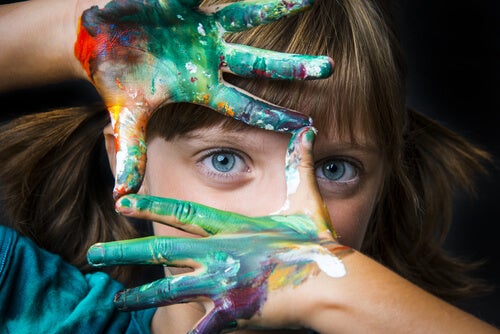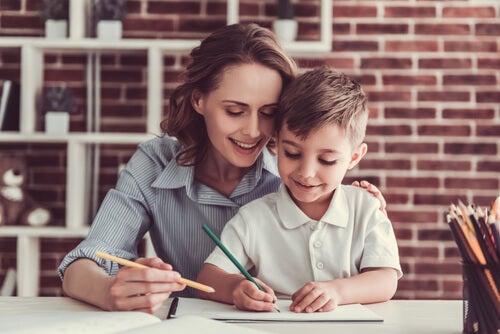Three Keys for Cultivating Creativity in Children

Most parents want their children to be obedient, attentive, smart, and nice. They want the best for them and work long and hard hours to achieve it. Cultivating creativity in them is also something they want. If they only had a magic wand to do it!
What are the keys to cultivating creativity in children? How do you make them produce those magic moments in which completely new ideas arise?
There are several different strategies for this. They’re all logical, consequential, and efficient. That being said, they require parents to be active and involved, far from those popular phrases such as “Can’t you chill out?” or “I don’t have time right now”.
If you want your children to be creative even if they’re part of an education system that prizes homogeneity, you need to make an effort to break the chain.

Three keys to cultivating creativity in children
1. Time organization, a challenge to creativity
English, swimming, math, soccer, chess, writing workshops… the variety of activities for children is enormous. You could say that they’re privileged because they don’t have to live in a big city to find activities that they or their parents are interested in.
The threat of a competitive adult world has led many parents to make sure that their children receive complimentary education.
However, this change in orientation comes with a price. Children don’t get bored, so they don’t have to invent games. They don’t need to make an effort to transform an environment so that they can have fun in it. Because creativity starts with mischief, games, and the control of one’s time. This is very hard to achieve when they don’t have any free time.
Thus, the first strategy to stimulating creativity in children is to give them time and space to make decisions without the pressure of having to respond to external demands. Otherwise, divergent thinking without the conquest of autonomy doesn’t make sense; creativity reinforces itself when it helps solve real problems.
2. The difficulty of challenges
It’s true that children can also develop their creativity during directed activities. This happens in a special way when there’s an intelligent regulation of challenges. Let’s talk about two of them:
The first group consists of challenges the child can face by themselves. In this situation, adults can help with encouraging phrases, taking on a parallel challenge, or dodging the temptation to help them. Children are capable, and achieving their goals will reinforce their confidence.
The second consists of challenges children need a little help with. They might not know what to do. They might not know the meaning of a word and the library is too far for them to visit by themselves.
In these cases, the temptation to dodge takes control. The parent can help the child calculate, but they must solve the problem. You can look something up in the dictionary, but they have to answer questions about history. You can accompany them, but they go the way they’ve already learned.

3. Technology and social gatherings
How cute, how nice! Many parents love it when their children show off abilities they’ve just learned. That being said, most kids don’t like it at all when their abilities are tested in an environment in which they feel evaluated and insecure. This can make them fail. It can make anxiety appear and make them not want to continue.
On the other hand, social environments are good places to develop creativity. In them, natural and unexpected changes happen that they must respond to. They must think and respond.
This is why it’s important for technology not to be in their hands yet. It’s about children facing the challenges of reality. It’s about facing challenges from others, too. However, it’s not about playing on a screen.
Creativity has several components: person, process, product, and personality (the four P’s, as described by Kaufman and Sternberg).
All cited sources were thoroughly reviewed by our team to ensure their quality, reliability, currency, and validity. The bibliography of this article was considered reliable and of academic or scientific accuracy.
Ferrándiz, C. (2011) Estrategias metodológicas de aprendizaje activo para el alumnado con altas habilidades: Documento general desarrollo de la creatividad. [Apuntes académicos].
Universidad de Murcia.
This text is provided for informational purposes only and does not replace consultation with a professional. If in doubt, consult your specialist.








